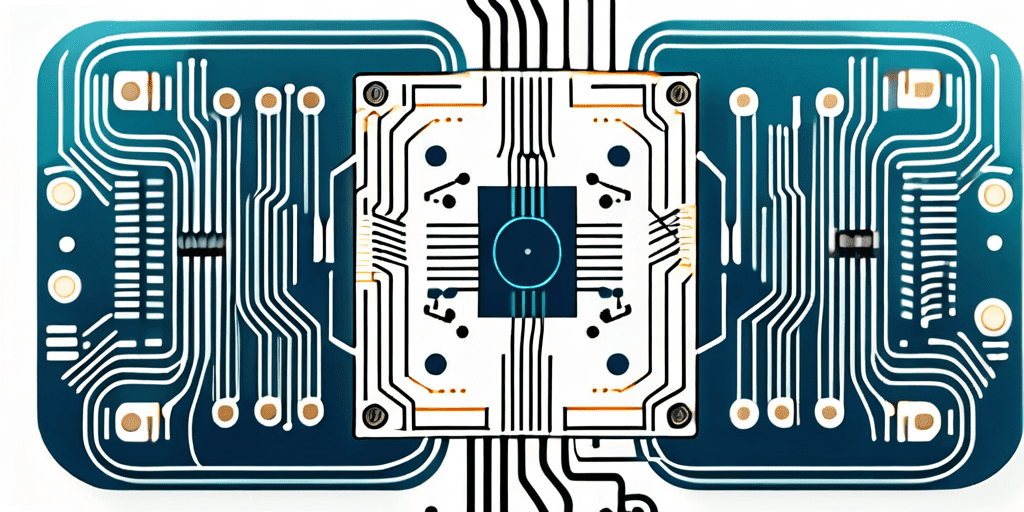The Clipper Chip, a controversial encryption device developed by the United States government in the 1990s, has been a subject of much debate and discussion. In this article, we will delve into the concept, purpose, controversies, and relevance of the Clipper Chip in today’s digital age.
Understanding the Concept of the Clipper Chip
The Clipper Chip was designed as a key escrow system, intended to secure communication while allowing authorized government agencies to decrypt messages when necessary. Its primary function was to provide encryption for voice and data transmissions, ensuring privacy and security in electronic communications.

One of the key aspects that set the Clipper Chip apart was its controversial nature. The concept of key escrow, where a third party held encryption keys, raised concerns about potential vulnerabilities and the implications for individual privacy. Despite the intentions of enhancing national security, the Clipper Chip faced significant opposition from privacy advocates and technologists.
The Origin of the Clipper Chip
The Clipper Chip had its roots in the broader government effort to combat the increasingly challenging task of intercepting and deciphering encrypted communications. With the rise of secure technologies used by criminals and terrorists, the US government sought to strike a balance between individual privacy and national security.
As encryption technologies advanced, law enforcement and intelligence agencies faced mounting difficulties in accessing crucial information for investigations. The Clipper Chip emerged as a proposed solution to address these challenges by providing a standardized encryption method with built-in mechanisms for lawful access.
The Technical Specifications of the Clipper Chip
The Chip implemented the Skipjack encryption algorithm, a classified 80-bit symmetric key block cipher. It also incorporated a unique feature known as the Law Enforcement Access Field (LEAF), which allowed authorized agencies to access encrypted communications with a classified key.
Furthermore, the Clipper Chip was designed to be tamper-resistant, with physical security features to prevent unauthorized access to the encryption keys. This added layer of protection aimed to ensure the integrity of the key escrow system and maintain the trust of both government agencies and the general public.
The Purpose and Functionality of the Clipper Chip
At its core, the Clipper Chip aimed to strengthen communication security. It was intended to provide a trusted means for individuals and organizations to protect sensitive information from unauthorized access.

The Clipper Chip, developed in the early 1990s by the U.S. government, was a controversial encryption device that sparked debates about privacy, security, and government surveillance. It was designed to strike a balance between individual privacy rights and national security interests, a delicate line that often led to heated discussions among policymakers, technologists, and privacy advocates.
The Role of the Clipper Chip in Communication Security
The Clipper Chip was envisioned as a tool to combat criminal activities involving encryption, such as drug trafficking and terrorism threats. It aimed to give law enforcement agencies the means to lawfully intercept and decipher encrypted communications, enhancing public safety.
However, critics of the Clipper Chip raised concerns about the potential for abuse of power by government agencies, as well as the implications for individual privacy and civil liberties. The debate surrounding the Clipper Chip highlighted the complex and evolving nature of encryption technologies in the digital age, where the need for security and privacy must be carefully balanced with the requirements of law enforcement and national security.
The Mechanism of the Clipper Chip
When using the Clipper Chip, users would encrypt their communication using the government-approved algorithm. The encrypted message would include the LEAF, which was a partial decryption key held in escrow by the government. Only authorized agencies possessing the corresponding classified key could decrypt the message.
This unique key escrow system built into the Clipper Chip raised concerns about the security of sensitive information and the potential for unauthorized access to encrypted data. The intricate design of the Clipper Chip’s encryption mechanism reflected the complex interplay between security, privacy, and government oversight in the realm of digital communication.
The Controversies Surrounding the Clipper Chip
The advent of the Clipper Chip raised significant concerns related to privacy, civil liberties, and the potential abuse of government power.

The Clipper Chip, developed by the U.S. government in the early 1990s, was intended to provide secure encryption for telecommunications while allowing law enforcement access to encrypted data when necessary. However, this dual-purpose nature of the Chip sparked a heated debate about the balance between national security and individual privacy.
Privacy Concerns Related to the Clipper Chip
Critics argued that the Clipper Chip compromised individual privacy by introducing a backdoor through which government agencies could access encrypted communications. They posited that this violated the rights to free speech and protection against unreasonable searches and seizures.
Privacy advocates and technologists expressed concerns that the government’s key escrow system, which stored encryption keys with third-party organizations, could be vulnerable to hacking or abuse. The potential for unauthorized access to sensitive information raised alarms about the security implications of the Clipper Chip.
The Legal Implications of the Clipper Chip
The Clipper Chip also raised legal concerns surrounding its implementation and potential misuse. Due to the unprecedented nature of the government’s key escrow system, legal frameworks had to be established to regulate access to decrypted messages and prevent unauthorized use of the Chip.
Legal experts debated the constitutionality of the Clipper Chip, questioning whether its mandatory use in telecommunications infringed upon individuals’ Fourth Amendment rights. The lack of transparency and oversight in the development of the Chip further fueled suspicions about the government’s intentions and its commitment to upholding civil liberties.
The Clipper Chip in Today’s Digital Age
As technology advances and new encryption methods emerge, the Clipper Chip’s significance has become a topic of debate.
The Relevance of the Clipper Chip in Modern Technology
With the proliferation of end-to-end encryption and the increasing use of secure communication platforms by individuals and organizations, the Clipper Chip’s relevance has diminished. Companies such as WhatsApp and Signal employ encryption methods that do not allow third-party access to their users’ encrypted messages, raising concerns about the effectiveness of key escrow systems.
Furthermore, the rise of quantum computing poses a new challenge to traditional encryption methods, including the Clipper Chip. Quantum computers have the potential to break current encryption standards, highlighting the need for continuous innovation in the field of cryptography.
The Future of the Clipper Chip
Given the evolving landscape of encryption and privacy, the Clipper Chip’s future remains uncertain. While its original intentions were noble, the implementation and potential implications have sparked ongoing debates. It is essential for governments, technology companies, and society as a whole to continue examining the balance between privacy and national security.
Moreover, the global nature of digital communication raises questions about the jurisdictional reach of encryption policies. As different countries adopt varying stances on encryption and backdoor access, the debate surrounding the Clipper Chip extends beyond national borders, shaping international discussions on cybersecurity and privacy.
In conclusion, the Clipper Chip represents a watershed moment in the history of encryption technology. While it was created with the aim of enhancing communication security, its controversial nature and the debates it sparked underscore the ongoing challenge of balancing privacy and national security interests. As technology continues to evolve, these discussions will undoubtedly shape the future of encryption and digital communication.
As the debate over the balance between privacy and national security continues in the wake of technologies like the Clipper Chip, it’s clear that robust cybersecurity measures are more crucial than ever. Blue Goat Cyber, a Veteran-Owned business, is at the forefront of protecting your company’s digital infrastructure. Specializing in medical device cybersecurity, penetration testing, and compliance with HIPAA, FDA, SOC 2, and PCI standards, we are dedicated to safeguarding your business against cyber threats. Contact us today for cybersecurity help and partner with a team that’s passionate about securing your operations.


